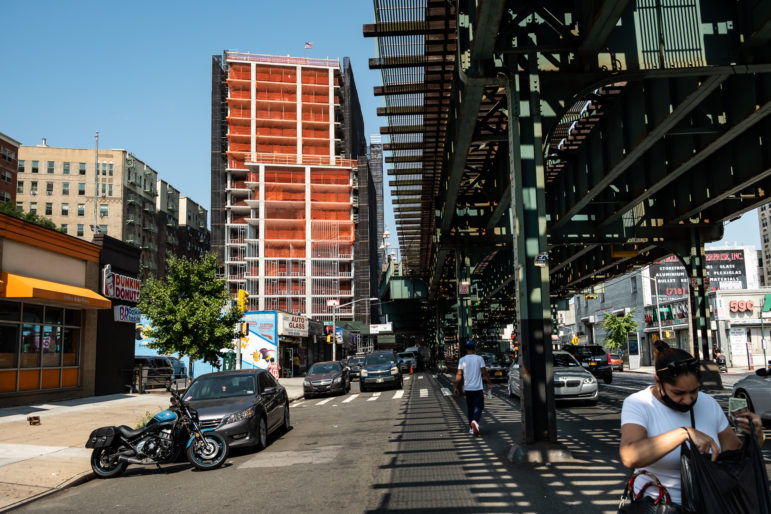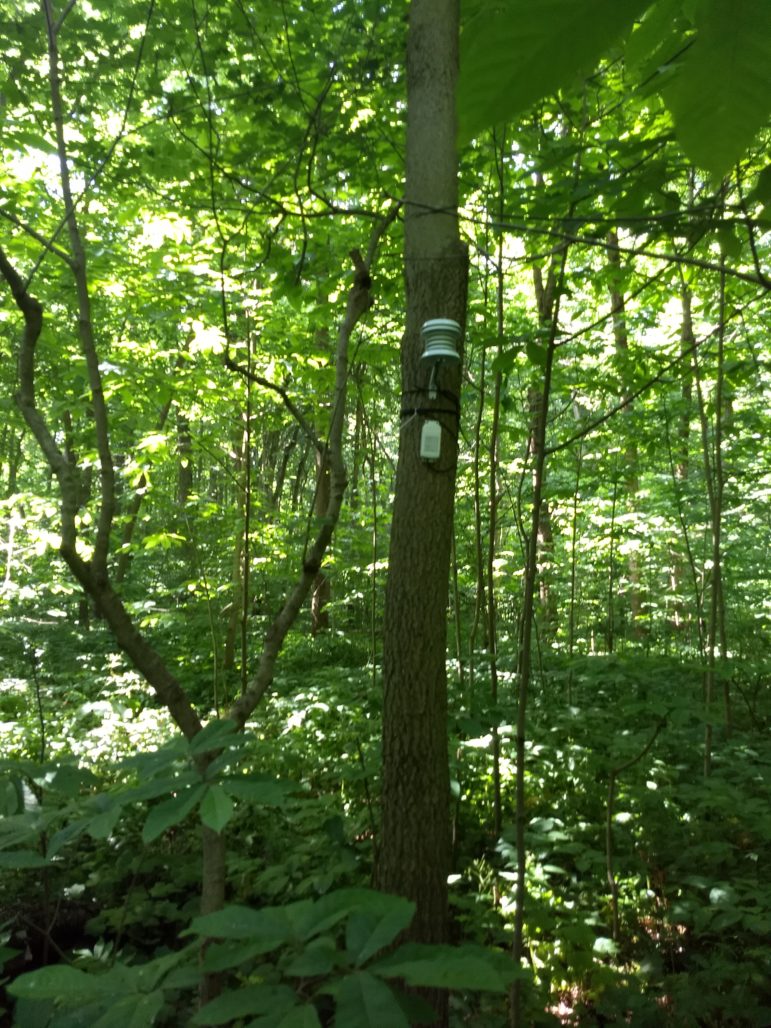A federally funded pilot program and a study in parks both seek mitigation strategies for urban heat islands—areas that experience higher temperatures due to heat-absorbing infrastructure and lack of access to features like greenery and bodies of water.

Adi Talwar
Jerome Avenue in The Bronx, one of the locations included in an upcoming DOT pilot program exploring ways to cool temperatures along certain city streets.In response to increased heat waves across the city, the Department of Transportation secured a federal grant to conduct a pilot program beginning later this year that will explore ways to lower temperatures along streets in East Harlem, Brooklyn and The Bronx.
The program, Cool Corridors, will focus on a high-density mixed-use corridor in East Harlem, a low-density residential corridor in East Flatbush, under elevated structures on Jerome Avenue and in Hunts Point in The Bronx, and a transit hub corridor in the Rockaways, according to Leslie Wolf of the Department of Transportation (DOT), which will oversee the pilot.
“The underlying concept of Cool Corridors is this: Addressing increasing temperatures is especially important since streets play a unique role in New Yorkers lives,” said the DOT in a statement. “Streets serve both as a place where people go outdoors to relax, and also as transportation corridors.”
The DOT was awarded $320,500 for the project from the Federal Emergency Management Agency’s Building Resilient Infrastructure and Communities (BRIC), a competitive grant program that funds projects to improve resiliency. The DOT will provide the additional $110,000 needed for the pilot, which will take about 17 to 24 months to complete, the DOT said.
The project is conceptual only, the DOT said, and will not involve physical equipment. Instead the agency will look at interventions for extreme heat that are available or in use in other cities—domestic and international—and study how well they might work in different types of New York streets and sidewalks to reduce temperatures.
The agency was vague in its application of what strategies it will try, but a FEMA official said some examples included tree-lined streets for extra shade, watering and misting stations and various different types of pavement or sidewalk materials.
A final report at the pilot program’s end will “offer an actionable playbook to inform the planning of urban streets to better mitigate the impacts of heat,” according to a letter regarding the pilot FEMA sent to the New York Division of Homeland Security and Emergency Servicesand shared with City Limits.
“This will be a good launching point for us to leverage this study and apply for further federal funding for capital projects,” said Wolf at an Aug. 16 special joint committee hearing to address infrastructure challenges related to heat waves, among other environmental issues.
Other agencies involved in the program include NYC Office of Emergency Management, the Mayor’s Office of Climate and Environmental Justice, NYS Division of Homeland Security and Emergency Services and FEMA.
A previous study tracking temperatures at the street level found that areas of The Bronx and Upper Manhattan were as much as 8 degrees hotter than neighborhoods around Central Park.

The role of forests
Another ongoing study by Natural Areas Conservancy is examining how urban forests contribute to reducing temperatures in New York and 11 other cities nationwide.
The researchers are collecting temperatures from sensors placed in and around forests in Central Park, Cloves Lakes Park in Staten Island, Forest Park in Queens and Seton Falls Park in The Bronx.
The results, expected by spring 2023, will help inform policy that supports maintaining and investing in urban forests, where temperatures can be 16 degrees cooler than elsewhere in the city, according to Dr. Clara Pregitzer, deputy director of conservation science for the Natural Areas Conservancy.
An analysis by the Conservancy found that only 16 percent of New York City’s urban forest is considered healthy. About one-third is in a “degraded” state, in need of “significant and costly restoration.”
“I think what this highlights is just the importance of having real forests and natural spaces in the city as a component to cooling strategies that include green space, and that the management and care of these places could be really important for benefits such as cooling,” said Pregitzer.
Addressing heat islands and access to cooling solutions is becoming more dire as scientists predict more frequent and intense heat waves as global temperatures rise.
Each summer about 370 people die from heat or from a condition exacerbated by heat, according to the city’s heat mortality report.
In August, City Comptroller Brad Lander released a report revealing inequitable access to cooling centers during a heat wave that month, particularly in communities with the highest heat vulnerabilities.
Extreme heat is “the deadliest climate hazard in New York City as well as in the United States,” said Rohit Aggarwala, the city’s chief climate officer, in the hearing last month.
Liz Donovan is a Report for America corp member.










One thought on “NYC Looks to Tackle Extreme Heat via City Streets and Urban Forests”
The problem is that in New York City, it costs $3,600 to plant a tree, whereas in other cities it’s well under $1,000 (https://nypost.com/2022/07/06/how-much-does-it-cost-nyc-to-plant-a-tree-a-tree-mendous-3600/). We don’t want to face the issue with our broken and quasi-corrupt public procurement process, so instead we waste time with these pilot programs and federal grants.